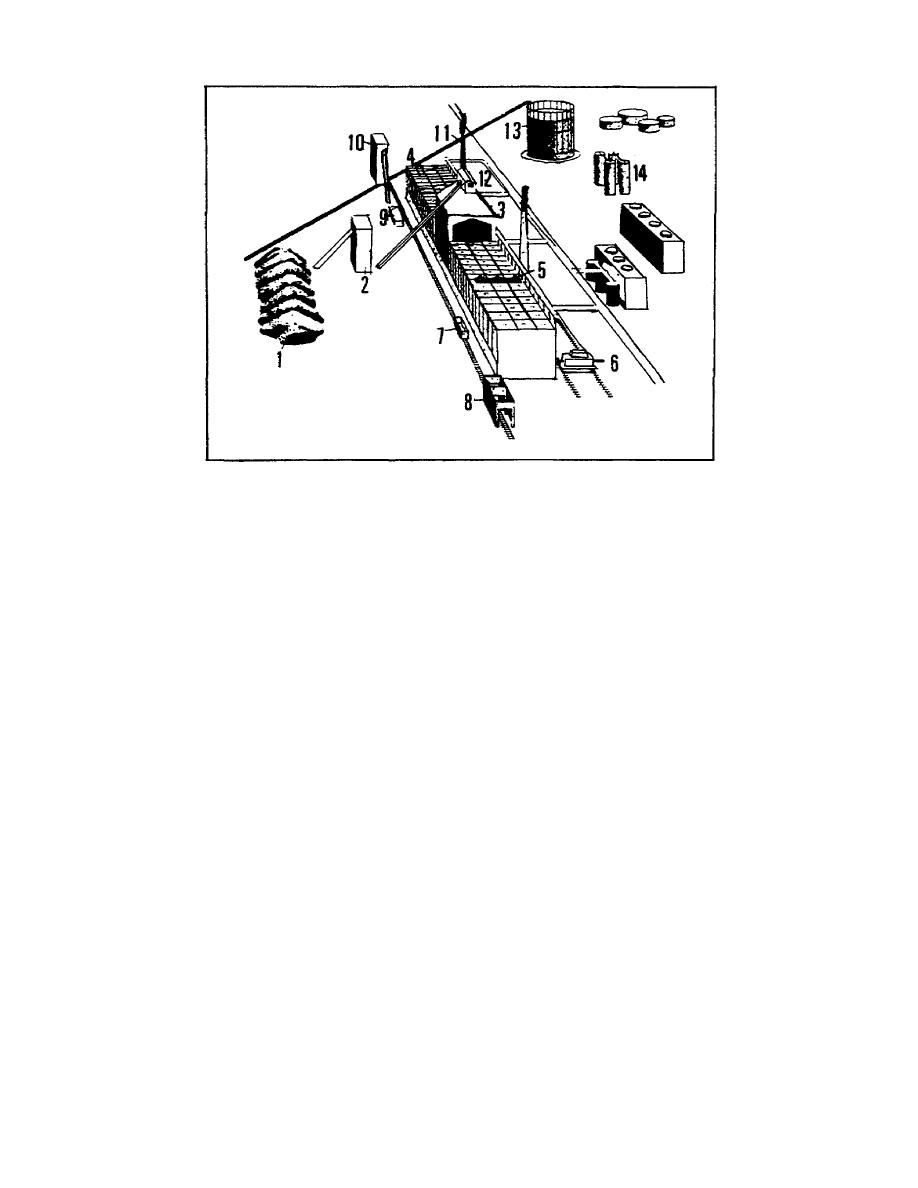
Figure 2-61. Coke Production.
(2)
Final stages of production (Figure 2-61).
The charge of coal is kept
in the coke oven approximately 18 hours to produce a high grade of coke. Each coke
oven is equipped with a removable door at each end. These doors are removed by a
machine on each side of the bank of ovens. Once the doors of the oven are removed,
the rammer (Annotation 6) which is on the side opposite the quenching car
(Annotation 7), rams the charge of coke into the quenching car.
(a)
Quenching tower: As the hot coke is exposed to the air, the coke bursts
into flames.
This necessitates moving the quenching car immediately to the
quenching tower (Annotation 8) where tons of water are dumped on the coke to quench
the flames and cool the coke.
When quenching is taking place, a dense cloud of
steam is formed and released into the atmosphere through the quenching tower stack.
(b)
Drying wharf: After quenching, the coke is taken to the drying wharf
(Annotation 9) where it remains until dry.
(c)
Coke screening tower: It is conveyed to the coke screening tower
(Annotation 10) where it is crushed and screened for use in the blast furnace.
b. Iron production.
Three raw materials--coke, iron ore, and limestone--are
required for iron production. These three items are placed inside a blast furnace
where they are subjected to a high pressure stream of super-heated air. This hot
air ignites the coke which in turn produces more heat, liquefying the iron ore and
limestone. The iron ore is reduced to pig iron through the loss of its oxygen to
be carbon. Additionally, the limestone acts as a flux and absorbs any impurities
contained in the molten iron. Both the molten pig iron and limestone flow to the
bottom with the limestone and its impurities floating atop the iron as a slag.
IT 0673
72



 Previous Page
Previous Page
